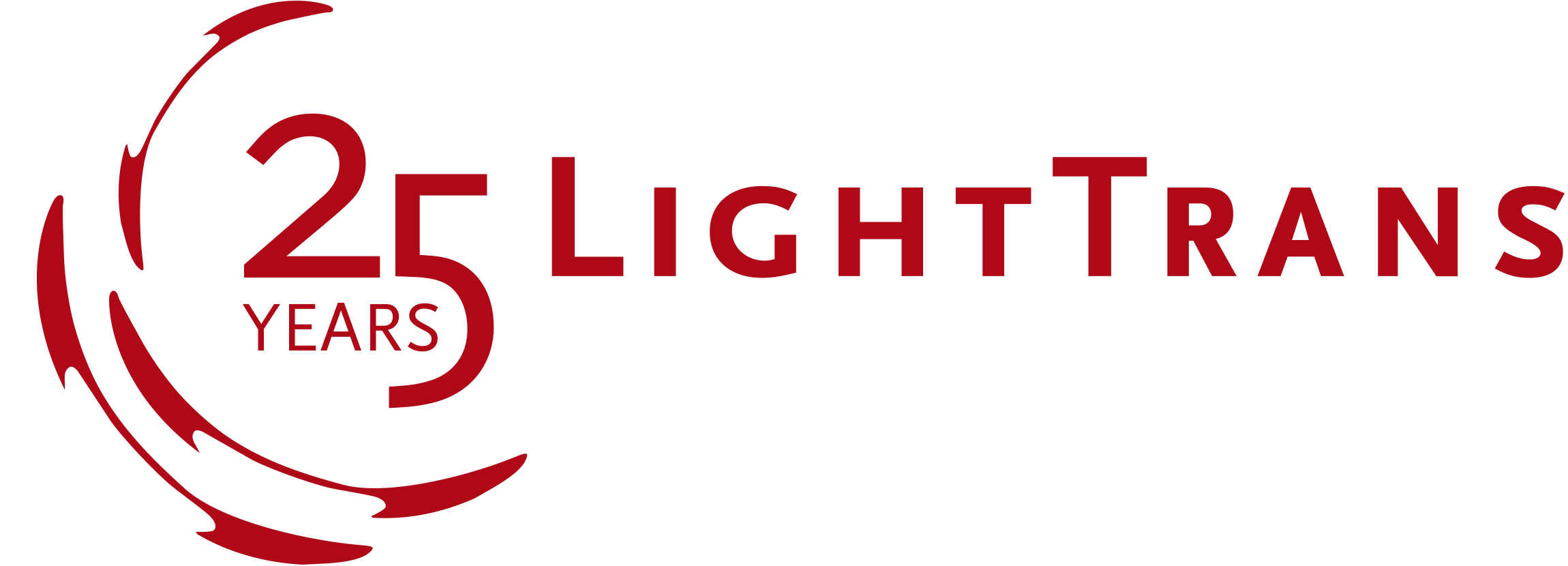What’s new in our Optical Modeling and Design Software?
Cross-platform Optical Modeling and Design (MATLAB & Python)
The modeling and design of modern optical systems, with their increased complexity, can benefit from the combination of multiple software tools. Especially for optimization and data processing a single software package often cannot provide all the necessary functionalities in all fields of interest. The batch mode of VirtualLab Fusion, when used alongside other software tools, enables precisely this type of cross-platform simulations. As examples, we demonstrate how to use Python and MATLAB to access the field solvers from VirtualLab Fusion, and to perform analysis and optimization tasks on that basis.
Read moreTolerancing with Customized Parameter Run
For a robust investigation of the optical performance of a designed system, it is necessary to take into consideration the manufacturing error which can affect various parameters of the system. For this purpose, VirtualLab Fusion offers a powerful and flexible tool called Parameter Run, which can be customized by the user via a programmable interface to allow for different kinds of random probabilistic distributions to be applied to the varied parameters.
Read moreAnti-Reflective Moth-Eye Structures
Inspired by certain moth and butterfly species, biomimetic moth-eye anti-reflection (AR) structures have been fabricated and used for a wide range of applications. Such structures are typically arrays of truncated cones with dimensions smaller than the wavelength of the light. VirtualLab Fusion provides convenient tools for constructing them, and the rigorous Fourier modal method (FMM) for their analysis. A typical workflow on the analysis and optimization of moth-eye structures is demonstrated.
Read moreModeling Beam Apodizers in VirtualLab Fusion
Beam apodization plays a key role in designing high-energy solid-state systems. Beams with steep edge profiles are more prone to develop diffraction ripples and these diffraction ripples are then intensified in optical systems such as amplifiers which may result in undesired effects such as self-focusing. To alleviate such unwanted effects caused by the diffraction ripples, beam apodizers are employed to produce beam profiles with uniform energy distribution.
Beam apodizers may be fabricated via different techniques, however, due to their constant exposure to intense radiation, they are prone to deteriorate. To address this issue, amplitude-only serrated beam apodizers were suggested by Jerome M. Auerbach and Victor P. Karpenko back in 1994.
In this newsletter, we seek to illustrate VirtualLab Fusion’s capability to model such customized aperture thanks to its highly customizable environment and cross-platform solvers. The results are then compared with that of the literature and are shown that they are in complete agreement with the lab results.
Read moreComponents, Solvers and Fourier Domains in VirtualLab Fusion
Fast physical optics rests squarely on the “connecting solvers” approach. One of the most important aspects of which is that it makes both Fourier domains (space and spatial frequency) available for the implementation of the electromagnetic field solvers – some solvers will be implemented in the one domain, others in the other. This results in a simulation sequence that must move back and forth between the domains. In this week’s newsletter we look at some practical implications of this and provide some handy tips to help you make the most of your work with VirtualLab Fusion!
Read moreThermal Lensing in Optical Systems
The advent of modern technologies in the area of material processing has seen an increase in the use of high-power laser sources in optical systems. The massive amount of heat generated by the high-energy sources leads to a deformation of the geometry and a modulation of the refractive index of the optical components in the system that will influence their properties. In VirtualLab Fusion these effects are handled by connecting surface operators with solvers for inhomogeneous media. We demonstrate these effects in various optical components common in material processing applications, like lenses and laser rods.
Read moreModeling of spatially extended partially-coherent source
In numerical simulations, when we represent light as an electromagnetic field, spatially extended sources can be modeled by several uncorrelated fully coherent fields, with identical energy density, but partially shifted with respect to each other [J. Opt. Soc. Am. A 27 (9), 2010]. In the fast physical optics software VirtualLab Fusion, we use this method to model a spatially extended partially-coherent source and explore the effect of the configuration of the elementary fields and the number of fields. Then we reproduce Young’s interference experiment using this source and investigate the coherence properties of the source by checking the changes in the contrast of the interference fringes.
Read moreTake part in our new event format: LightTrans User Meetups!
Interferometric Setups and Applications – Modeling & Analysis
28 April | 10:00 – 17:00 (CEST)
A new way of interacting virtually with our optical engineers and sales representatives.
Register now and save your seat for our User Meetup.
Webinar review
Have a look at our Key Learnings from the last webinar on Exploring VirtualLab Fusion.












